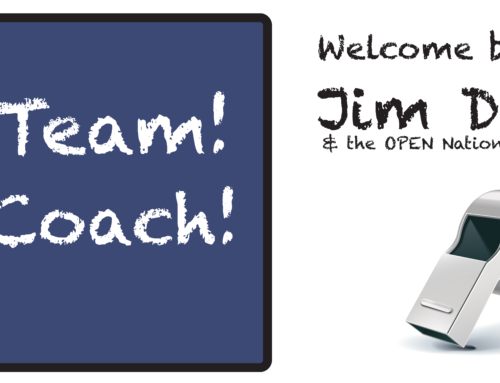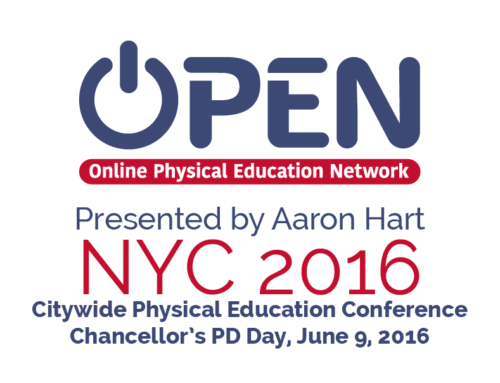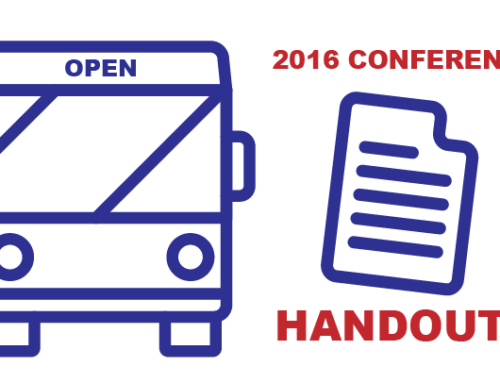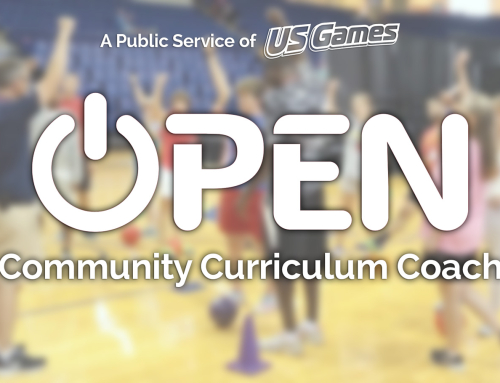Here are 5 Academic Integration activity ideas from Nick Kline, NBPT – author of PETop5.com.
1) Colored Dice Sport Skill Review Lesson: At the end of many of the units I teach, I use this concept as a fun way to review unit skills while incorporating academic concepts.
- Create a large activity area with 2-3 sets of three foam dice (red, blue and yellow) just outside of the area’s perimeter. If you don’t have different colored foam dice, simply place any die in a colored hula-hoop to distinguish what color it is. Space each set of dice around the perimeter so that students can move and work safely.
- Display the Sport Skill Chart/Card using a projector or as a printed activity card. I have the privilege of having a rear-mounted projector attached to a computer on one end of the gym (out of the way of my physical space). If you don’t have access to similar technology, then print a few copies of the slides and post one near each die location.
- Looking at the sample Skill Chart slide, you can tell that each die represents a different category of skill or knowledge. The Blue Die is specific to the sport or skill being reviewed (in this case soccer). The Red Die requires student to perform fitness tasks. The Yellow Die represents tasks that are a combination of the cognitive and affective domains as applied to the skills that we’re building.
- Student work together in partners to roll the dice and complete the task. Partners have their own space in the activity area and will take turns moving to, and rolling each color die, one die at a time.
- Quick Links to the Sport Skill Samples: PPT, PDF
- Possible Equipment Ideas: Dice Sets, Soccer Balls
2) Bowling Fitness: Typical bowling lessons result in very little MVPA. I designed this lesson to change all that. With the integration of fitness and math, your students will discover a whole new bowling experience!
- Create bowling lanes with students in groups, ready to bowl.
- Use a projector and screen, or print the slides as posters to display the fitness related tasks. In the sample, I integrate math skills into the lesson by having students multiply the turn number they are on by the number of pins still standing after 2 rolls.
- Student instructions are listed on the sample slides.
- Quick Links to the Bowling Fitness Samples: PPT, PDF
- Possible Equipment Ideas: Bowling Set
3) Venn Diagrams: Compare and Contrast activities and skills by using Venn Diagrams.
- Pick any two physical activities, movements, or games to prompt the brainstorming process. In my example I had students brainstorm the similarities and the differences between throwing flying discs and completing an overhand throw, putting their ideas in a Venn Diagram.
- Use this group discussing time to introduce a skill or activity, or to debrief a topic at the end of a lesson.
- Quick Links to the Venn Diagram Samples: PPT, PDF
- Possible Equipment Ideas: Flying Discs, Foam Balls
4) Social Studies with a Dance Lesson: Many dances have cultural significance. Rather than just learning the movements, take time to explain each dance’s history to your students.
- Include facts about the country where a dance originated.
- Include other fun facts and encourage your students to continue to research more information on their own.
- A favorite dance in my classes is Tinikling, a well-known dance from the Phillipines. This dance requires the use of bamboo sticks. I also use pvc piping to replicate the sticks at a lower cost. You can also use jump bands to increase MVPA level for all participants.
- Again, I use a projector to display the pertinent information (including YouTube videos) about the dance for students to view and reference. However, the information given in the slides can easily be presented without a screen.
- Quick Links to the Tinikling Facts Samples: PPT, PDF
- Possible Equipment Ideas: Tinikling Cords
5) Fruit Sample: Have you ever provided your students with a chance to sample a fruit or vegetable? If not, I highly recommend trying it. The number of students that have never tried something that we might think of as a common food might shock you. For example, I once provided pieces of pears for students to taste. I learned that while most of my students had eaten canned pears, almost 75% of my students had never tried a fresh pear!
- Whenever possible, I pick a class to assist with the preparation of the food samples. For example, when making kale chips, I had students take the leaves off the stems, rip them into bite-sized pieces, mist with oil, and sprinkle with salt. The only thing that I had to do was put the trays in the ovens. I have found that not only do the kids love helping, they are much more likely to try and like whatever it is when they have helped prepare it themselves!
- Funding has been fairly easy to find. Some sources that I’ve utilized in the past include my school’s PTO/PTA, finding local business sponsors, and writing small grants with our local health department.
- I only use fruits or vegetables that are in season. I can typically purchase them at a lower cost. For my school of 300 students I can usually keep spending down to less than 25 cents per child (or $75 total).
- Prior to having the students taste the sample, I provide lots of information about the item. I typically use my school’s morning meetings to introduce the fruit/vegetable. At our morning meetings all of our students and staff gather in the gymnasium prior to the official start of the school day.
- At that time, I cover any academic area (nutrition, geography, math, ELA, science, etc.) that is relevant to student learning outcomes.
- I also ask teachers to survey students after they have tried our sample to collect the following data: 1) How many students had tried that item before our tasting? 2) How many students liked it? 3) How many students would eat it again?
- The academic integration continues as I tabulate and graph the survey results to share with the students!
- Quick Links to the Fruit Quiz Samples: PPT, PDF
- Possible Equipment Ideas: Fruit and Veggie Spot Markers






